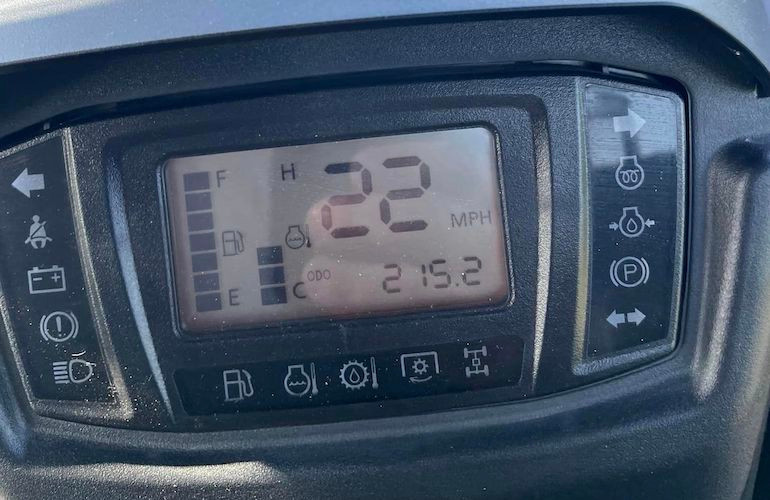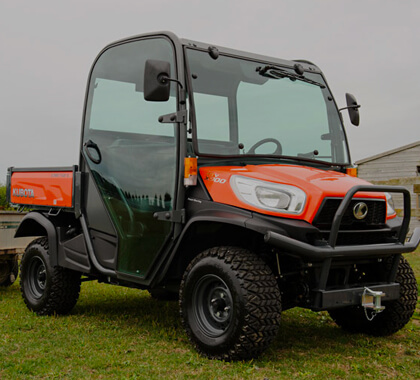The Top Speed Of Kubota RTVs And How To Increase It
Dec 5th 2022
If you didn’t know already, the Kubota line of UTVs are farm vehicles made for work; they're not designed to cruise trails or keep up with other side-by-sides. To put it plainly, Kubotas are slow. But what they lack in speed, they more than make up for in towing power and the ability to climb like a mountain goat in low range. Nevertheless, there’s a big difference between riding reasonably slow, and riding painfully slow. So how fast can a Kubota side-by-side go? And is there anything you can do to increase the top speed of your Kubota UTV? Let’s find out!
What Is The Top Speed Of A Kubota RTV?
Kubota RTV 520 / Kubota RTV 500 Top Speed
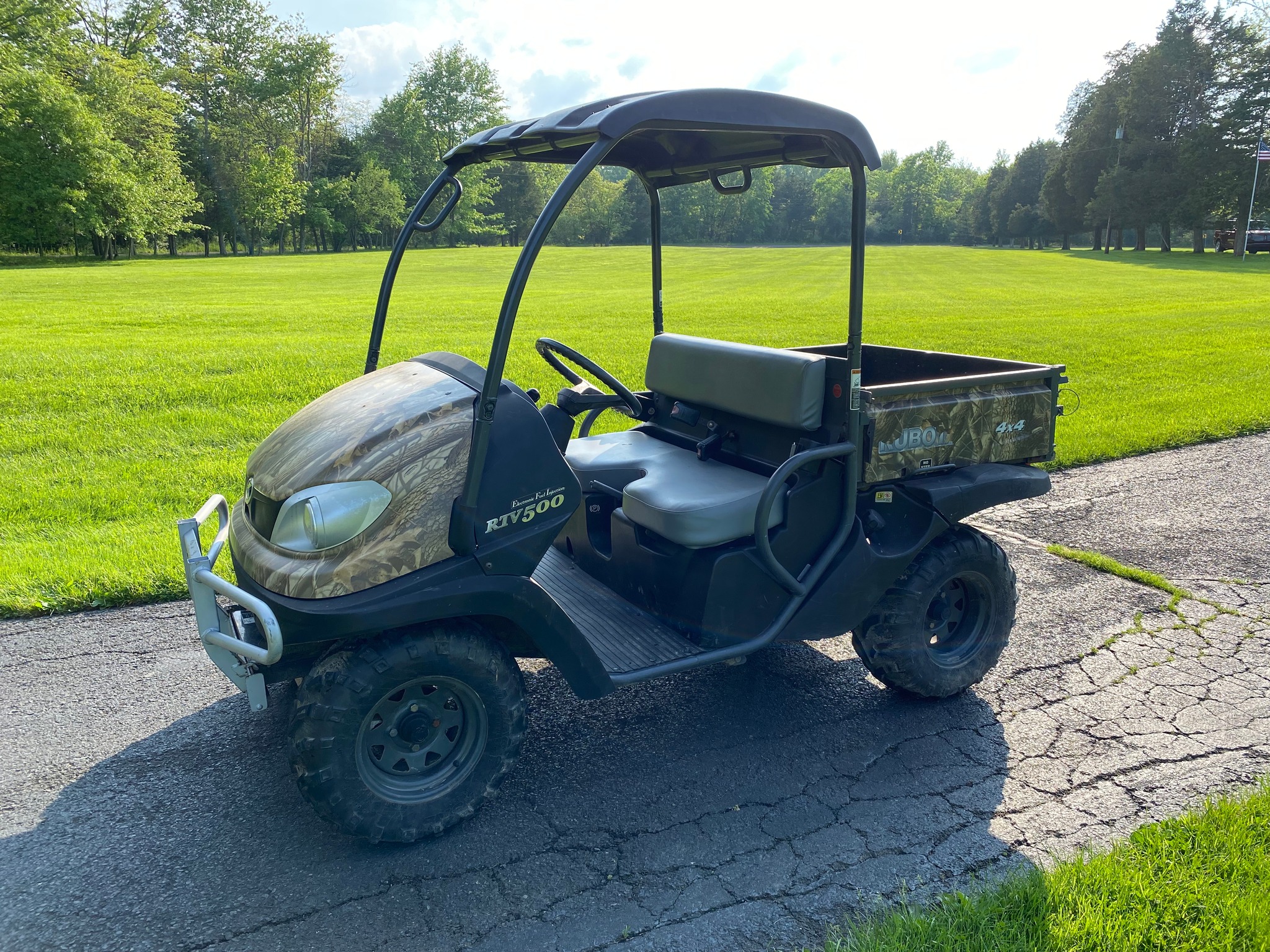
The Kubota 520 has a top speed of 25MPH, and this is the same speed that Kubota RTV 500s are governed at. The big-bore diesel engines used in larger-CC Kubotas are often ascribed as the reason for their slow top speeds. But this isn’t the case with the RTV 500 and 520, as all 500-class Kubota vehicles use gasoline engines. Nevertheless, the Kubota 520 and 500 still have plenty of power and ample amounts of torque!
Kubota RTV 1100 / Kubota RTV 1120D / Kubota RTV 900 Top Speed
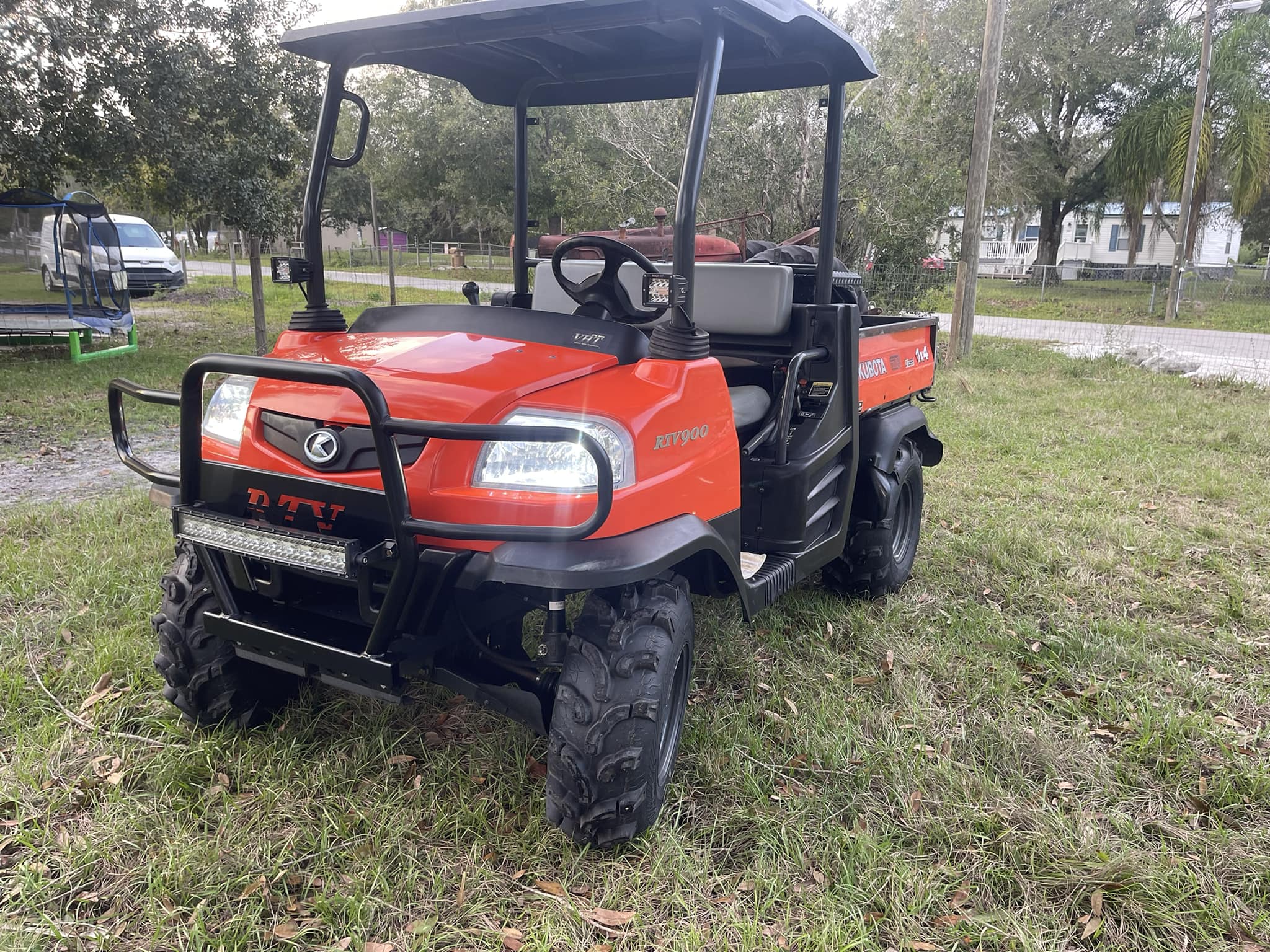
Without augmenting, retrofitting, or otherwise messing with your rig, you should be able to get 22-25MPH out of a stock Kubota 1100 on flat pavement. With a top speed of nearly 29MPH, the RTV-X-1120D is a bit faster, and for a machine with such a short wheelbase, 29 miles per hour is actually quite good. Where hill riding is concerned, you might struggle to exceed even 10MPH in your RTV 1100. Turning off the AC should help with that, and more power can be also achieved through the addition of a turbocharger, which we’ll touch on later.
Like the RTV 1100, the top speed of a Kubota RTV 900 is also 25MPH. Sure, they aren’t the fastest machines out there, but they’re built to be rugged and last a lifetime! Plus, because they’re governed at 25MPH, Kubota RTVs are considered slow-moving vehicles, and as such, only require a lap belt from the factory as a minimum safety restraint.
If you turn up the injection pump, install a turbo kit, jack your rig up with a lift, and then squeeze massive tires underneath it, you should be able to go a bit faster. But for those with greater distances to cover and less time to get there, a Kubota RTV-X850 is a much quicker option.
Kubota RTV-XG850 Sidekick Top Speed
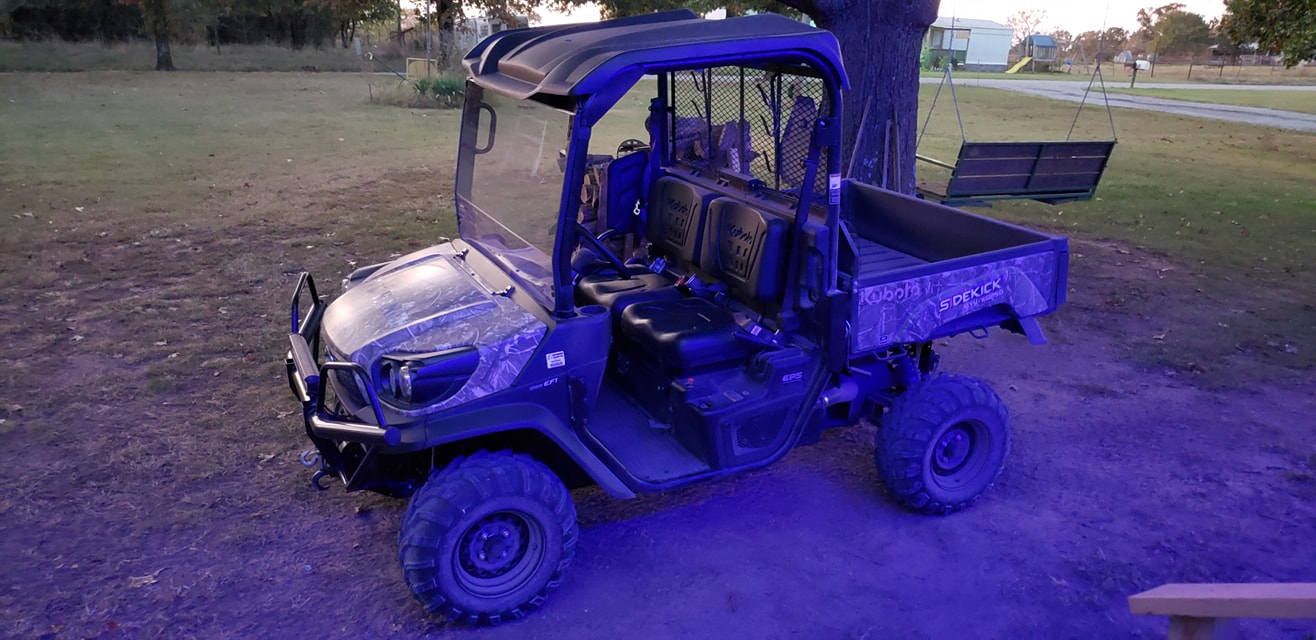
Where the X-Series Kubota RTVs top out at around 30MPH, the Kubota Sidekick has the ability to travel at the shockingly-quick speed of 40MPH – which makes it the fastest vehicle in Kubota’s RTV lineup! Although the Sidekick is gas powered, it can still work just as hard as the diesel Kubotas. And for a machine built by a tractor company, it definitely has some zip!
Diesel Kubotas
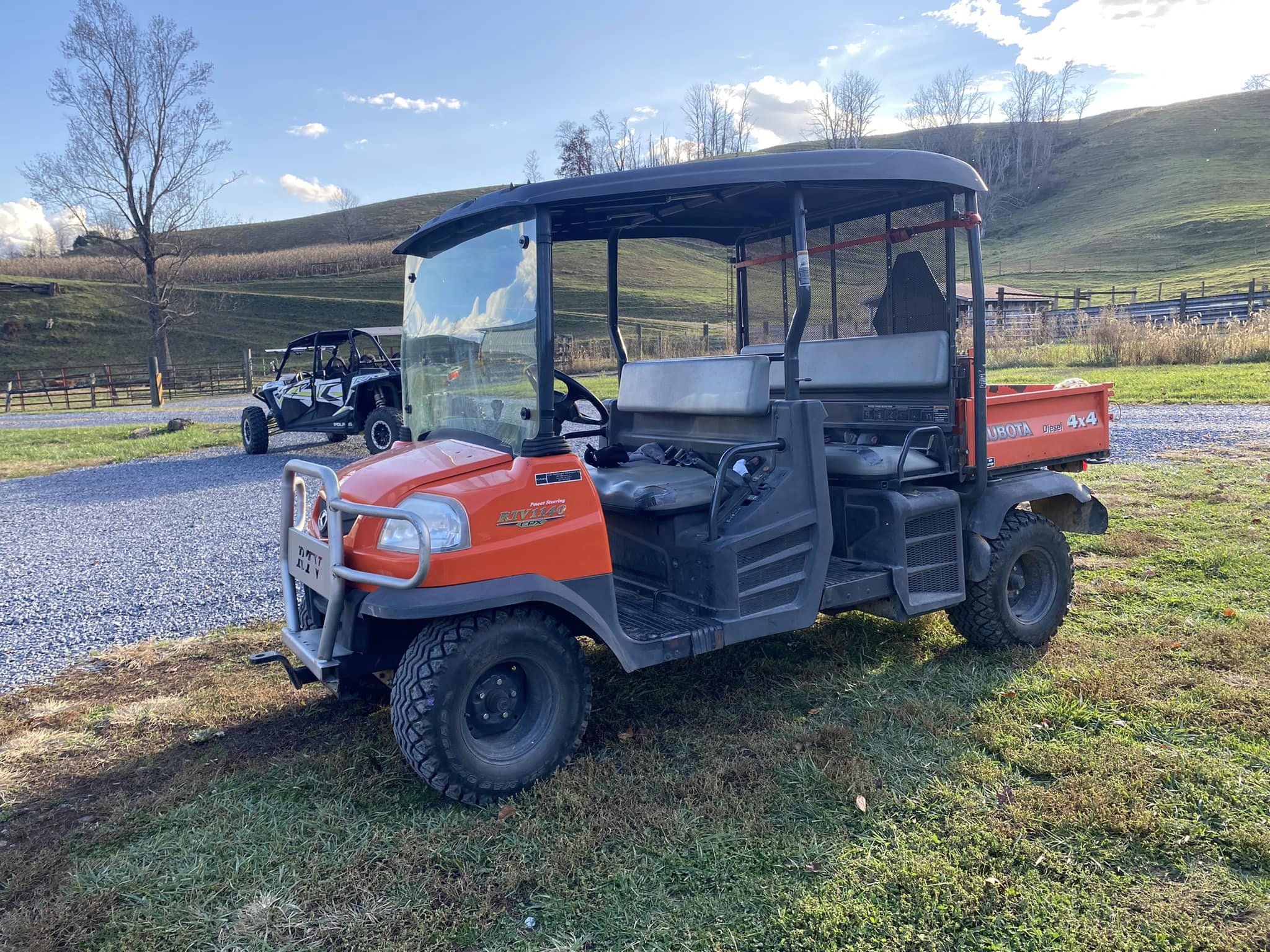
The engine speed and swash plate (hydraulic flow) are tied together in diesel-powered Kubota RTVs. Thus, speed = flow. As you want more power and step on the accelerator, the machine is also trying to increase hydraulic flow, causing even more of a load to be generated! That’s why some people add a hand throttle kit. You can set the throttle at a high RPM, and then the accelerator pedal will only control the hydraulic flow (speed), leaving the torque and hp of the engine to be always operating within their power band as opposed to lugging. Consequently, you don’t want to mash the throttle when attempting to go fast in a diesel Kubota. The opposite is true, and you actually pull better if you back off the throttle because it decreases the maximum hydraulic flow and unloads the engine.
Kubota RTV Turbos
While turbo kits can be installed in Kubota RTVs for faster top speeds, you’ll only get a marginal increase in your top speed with a turbo. Instead of making your machine go faster, a turbo is better suited for helping it hold the speed it can generate – especially uphill. A turbo will also force the engine to accelerate quicker and increase horsepower, but it doesn't change the governed RPM at wide-open-throttle.
Further, there is no other final drive gear ratio set available beyond the OEM supplied unit. The hydrostatic drive is simply a hydraulic pump and motor with a fixed maximum flow capability. While you can get a little more out of the bottom end with a turbocharged Kubota, you won’t get much more from the top end. Plus, you could be putting your machine at risk after installing a turbo.
By pushing the OEM components in your Kubota beyond their rated specs, you’ll be forcing the hydraulic oil over the relief valve, creating heat, accelerated hydrostatic component wear / failure, and accelerated wear to the engine components. Although some replacement parts for Kubota RTVs are inexpensive, some repairs are both difficult and costly to fix.
How To Safely Increase The Top Speed Of Your Kubota RTV
Increasing your wheel diameter is a popular way to safely increase the ground speed of a Kubota RTV. However, with taller tires for faster speeds on the top end, you’ll be sacrificing bottom-end torque. There’s a reason why Clydesdales don’t run in the Kentucky Derby, and there’s a reason why Kubota RTVs are tailored for work rather than recreation. With Kubota RTVs, you’ve got transmissions that are essentially modified versions of a compact Kubota utility tractor. Tractors don’t go fast, and neither do Kubota side-by-sides.
If you buy a work vehicle with a sluggish diesel engine and a geared-down transmission, don’t be disappointed because it won’t go as fast as you want it to. With other machines, you can keep what you like and improve upon what you don’t like. But with a Kubota, you won’t get much utility beyond basic utility. There are some things you can do to increase the top speed of a Kubota RTV, but it won’t be by much, and by installing some speed-increasing mods, you’ll be risking two of the main features of Kubota RTVs that make them so great: reliability and longevity!

